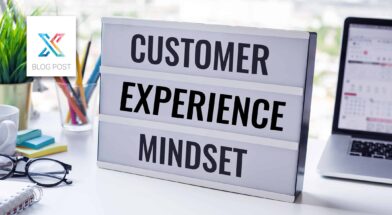When a firm considers how to create client strategy through permissive feedback programs, but without a real purpose or a solid plan, other than "finding problems", it's lackluster. The result – increased workload for your team, and a minimal chance of anything beneficial being done with the data collected. This leaves both your team and the clients who spent time offering feedback with the hope of improvement on your end – disappointed and devalued.
Imagine this, you and I are working on a multi-million dollar, long-term project for your firm. About halfway through the project, I ask you for some feedback and then store it away in a file somewhere until my team and I have a chance to review it. Over the next several months, nothing changes – including the challenges and concerns you noted on your feedback request. You were hoping for improvements, and I was just checking a box – and missing out on opportunities.
Would you work with me again?
Maybe, but you certainly won’t be going out of your way to send me projects or give me constructive feedback.
What’s the solution?
If your firm has or is considering asking for client feedback in any capacity, we encourage you to begin with a clear purpose, plan, and intentionality for the data you collect. Client Savvy's goal is not only to have your clients “check a box” with a survey to ensure you are client-centric but to also use the data collected to strategically drive business objectives.
Interested in finding out if you’re on the right path? Start by asking yourself the 8 questions below
If you know the answers to these questions, it should give you a quick glimpse as to whether your feedback program is purpose-driven, or permissive. If you answered “yes” to 5 or more of the questions, then great news - you are among a very small percentage of firms who are on their way to a successful program.
Create a Purpose-Driven Client Feedback Program
So how do you create a feedback program that is Purpose Driven? Great question! Here are some best practices to help move your program in the right direction:

- Make sure your feedback program is outcome driven, and lead with purpose. That does not mean, “I want to know how satisfied my clients are” is the outcome.
- Always, always always follow up to feedback. Whether great or challenging there should always be a follow up. Best practice would indicate that a follow up should happen within 24 hours.
- Determine when “Critical Moments of Truth” happen during your engagement and aim to capture feedback around those times.
- Do not use electronic feedback as a mechanism to replace conversation, rather to begin and prioritize them
- Focus on the process not the people
- Always depersonalize the feedback, do not criticize. Look at it as data and an opportunity to improve.
- Always make it about the client’s expectations, not your firm
- Keep it simple and make it easy
- Identify your core themes that mean most to your client experience. Even though the questions will differ from each critical moments of truth, the themes should remain consistent. Ex. Accuracy, Responsiveness, Budget, etc.
- Don't ask if you can’t act
- Make sure your process has accountability (ex, make sure your top 80% of revenue are giving feedback)
- The person who can act, should be the one asking
- Get feedback from everyone in the organization who influences the purchase decision
- Have an effective (internal and external) communication plan. Make sure your clients are aware that if they take the time to comment, you will take the time to care and execute. Make sure your team knows this will not affect their position or career, but will be used to create more efficiency, productivity, and opportunity – ideally, it will make everyone’s lives and jobs easier.
Why your Intention Matters
Purpose driven feedback can create some amazing business outcomes, help overcome challenges and reduce risks.
Most firms we work with see 2X the referrals, 3X the revenue and profitability growth, and find they are 7X less likely to lose a valuable client. Effective feedback programs can even drive enough returns to your investment to pay for themselves for years to come. It’s kind of a big deal.
During our 17 years in client experience, we have also identified 23+ significant business problems that accountable feedback programs help professional services firms solve. Click here to see what they are.
Lastly, it’s also been proven by our team that your clients DO WANT you to ask for feedback, as long as it’s done the right way, and you actually do something about it when you receive it.
Handled properly, client feedback actually makes their lives better, safer, and easier - and that's what is client experience is all about.
In summary, client feedback programs that are created and executed with a purpose beyond “looking for problems” add value, drive business outcomes, reduce internal resistance, increase employee adoption, and are more sustainable long term.
Interested in learning more?
We would love to help.

Blake Godwin is President and Partner of Client Savvy. Contact him at blake@clientsavvy.com
Client Savvy (formerly Client Feedback Tool) helps professional services firms create fierce client loyalty. By providing clear insight into your clients’ perceptions, we enable companies to grow, differentiate themselves, and develop their staff into client savvy professionals.
To learn more or talk to a client experience expert, e-mail us or set up a 15-minute call here.





